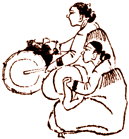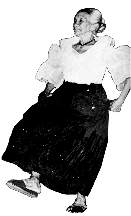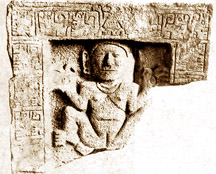![]()
women's power
"Brothers! Our ancestors considered it great offense to reject the counsels of their women,
particularly of the Female Governesses. They were esteemed the mistresses of the soil."
--"Good Peter" of the Haudenausaunee to colonial governor Clinton of New YorkAn international feast of creative and indominable women, famous and anonymous, ancient and modern. Leaders, founders, clan mothers, culture-makers, healers, holy women; builders, farmers, market women, musicians, doctors, witches, mystics, writers, educators, athletes, pirates, warriors, mavericks, rebels, activists, and liberators. This collection of rare images, seen by hundreds of audiences, surveys female spheres of power as well as
women who defied the strictures of patriarchy, class, empire, and racial caste.
A dramatic overview of women's history, now available on DVD.
NEW! rebel shamans ::: click link to view page
woman shaman ::: click link to view page
mother-right and gender justice
Matrix* societies are not patriarchy in reverse, but an entirely different paradigm. Cultures that are both matrilineal and matrilocal correlate with indicators of female liberty and power: decision-making authority, political and spiritual leadership, economic leverage, inheritance and land rights. Egalitarian gender politics are encoded in the social fabric: matrilineages have no "fallen women," no "illegitimate" children, and matrilocal husbands, surrounded by their wives' kin, are unlikely to commit marital abuse. Certain indigenous cultures in Niger, Yunnan, Sumatra, Vietnam, Ontario, Surinam, Micronesia uphold these egalitarian principles. This international visual presentation probes the implications
matrix* cultures hold for a future of gender equality. What would the world be like
if female elders or women's councils had the final say on war?
*Matrix defines egalitarian matrilineal / matrilocal societies and also implies value placed on life-support networks.

I count the grains of sand on the beach and measure the sea.
I understand the speech of the mute and hear the voiceless.
---Delphi Oracle, in Herodotus I, 47
Holy women, ritual leaders and temple mothers: an illuminating voyage through ancient art and modern photos of priestesses performing sacraments. How women create sacred space: historic sanctuaries and living traditions of female spiritual leadership in Africa, Asia, Europe, the Americas, Australia and the Pacific Islands.
 the
women's drum
the
women's drum"...the turban-wearing women of Asian Kybele...with drums and bullroarers and booming of bronze cymbals in their two hands make great sound...celebrating her who is the wise musician of the gods and healer as well."
Four thousand years of women drummers: a stunning array of female musicians, shamans and celebrants from Mali, India, Siberia, Chile, Asia Minor, South Africa, Kansas, Eritrea, Spain, Canada, Yemen, Peru, Uzbekistan, Korea, Iran, New York, Algeria, Timor, and more .
the mysteries: sacraments of birth
In the house with the tortoise chair/ She will give birth to the pearl/ To the beautiful feather...
There she sits on the tortoise/ Swelling to give us birth/ On your way, on your way/
Child be on your way to me here/ You whom I made new... --Aztec poemSacraments of conception, birth and child-blessing, in art from every corner of the world. Women's ritual culture around the passage into life (and possible death) through the body and blood of mothers. Birth huts and labyrinths, spirals and breastpots.
womanhood initiations
The coming of age ceremonies: seclusion, vision-seeking, body-painting, instruction by elders, and the dance of new women before the entire community, in sacred regalia, with cowrie strands, masks, beaded veils, layers of cloth, new belts or the long skirts of adult women. The intrusion into these ceremonies, in some places, of acts which symbolically or physically tame the female body must not be allowed to obscure the beauty and value of the core traditions over which they have been imposed, and the importance of rites of passage for youth. These rites are now being reclaimed -- in some places they were never lost, in many they were crushed, and in others, where they were turned to enforcing masculine dominance, many women are choosing to change harmful practices while keeping the sacred core of the most ancient traditions.
::: women
elders 
"Whoever does not know my name and my house, you can be sure they are from somewhere else!"
---La Celestina, 15th century play about a Spanish alcahuetaClan leaders. Wisewomen. Oral historians. Healers. Rebels. Drummers. Dancers. Sibyls. Witches...
The social vulnerabilities of old women in patriarchal societies. Stereotypes and witch hunts. Survivors. Old women as resisters, radicals, non-conformists, activists, and leaders. Divinity as Old Woman: Omosi-mama (Manchu), Nana Buruku (Fon), Chhala Pachcho (Oraon), Cailleach Bhéara (Irish), Xi Wang Mu (China), Befana la Strega, la Vecchia (Sicily).
